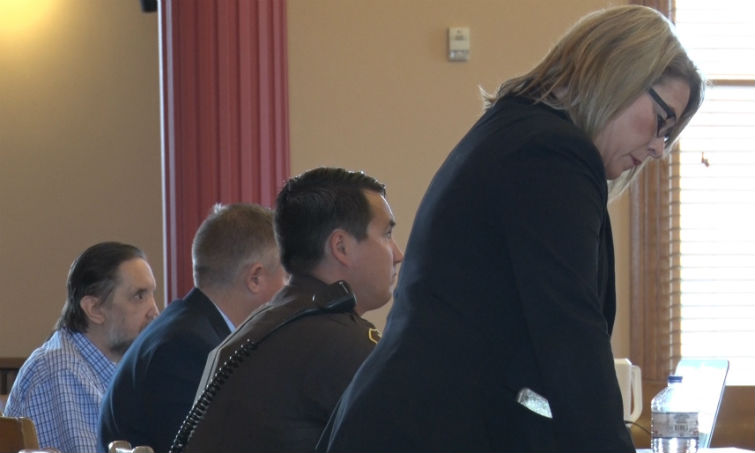Pathologist reveals bullet patterns, toxicology report in murder trial

CRYSTAL FALLS — Day three of Alfred Saario’s trial brought forth several expert testimonies, calling the victims toxicology report into question. ABC Ten’s Chelsea Birdsall has those details.
Several experts were called to the stand to testify this morning, kicking-off day three of Alfred Saario’s trial who is accused of shooting and killing his step-daughter, Jamie Lee James, in self-defense. Second on the stand for the prosecution was Dr. Scott Kantola, a pathologist at U.P. Health System – Marquette. Kantola conducted an autopsy on the victim and identified four distinct wounds on James’ body, two entry-holes, and two exit-holes.
“It entered kind of on the back side of the body, traveled through the right lobe of the lung, and then damaged the left ventricle of the heart, hit the left lobe of the lung and then exited through the ribs, then through the arm,” Kantola described in his testimony.
He also testified that he didn’t find any gun powder in the wound.
“The fact that you didn’t see any soot, burns, gun powder, or muzzle imprint, what did that mean to you, if anything?” asked Iron County Prosecutor, Melissa Powell.
“It indicates there was some distance between the end of the gun and the victim,” Dr. Kantola answered.
These multiple traumatic injuries were deemed the cause of death, which was ruled a homicide. A toxicology report was done during the autopsy and revealed James had four drugs in her body. Of the four, Kantola found two therapeutic drugs in her system, both of which were identified as antihistamines for allergies. The other two were recreational-marijuana and morphine. But their limits were well above normal dosages.
“Her levels were beyond therapeutic level, but I would point out that people who chronically take opioids can develop fairly high tolerances so it can be very difficult to say what the effect of the drugs would be on the individual, but they were over the typical normal levels,” Kantola said.
James was seeking treatment for an opioid addiction. Defense attorney Henry McRoberts pressed the matter during cross examination, asking Kantola is the drugs could spark aggressive behavior. Kantola said it depends on the user, but they are usually identified as sedative in nature and typically bring bouts of euphoria. The trial enters day four Thursday with a new slew of testimonies.
